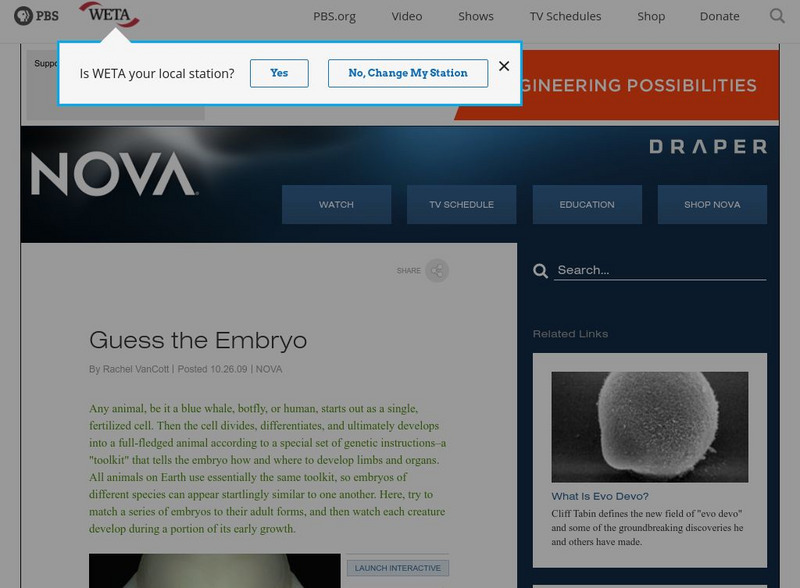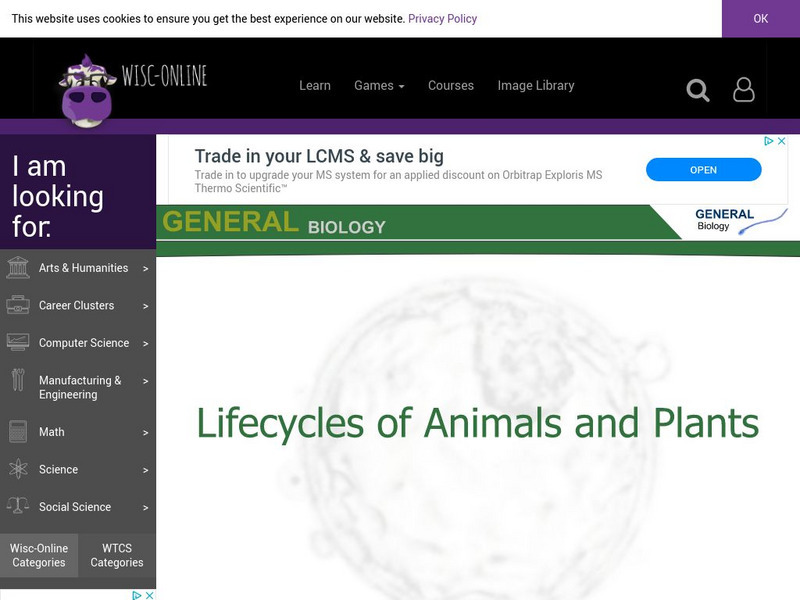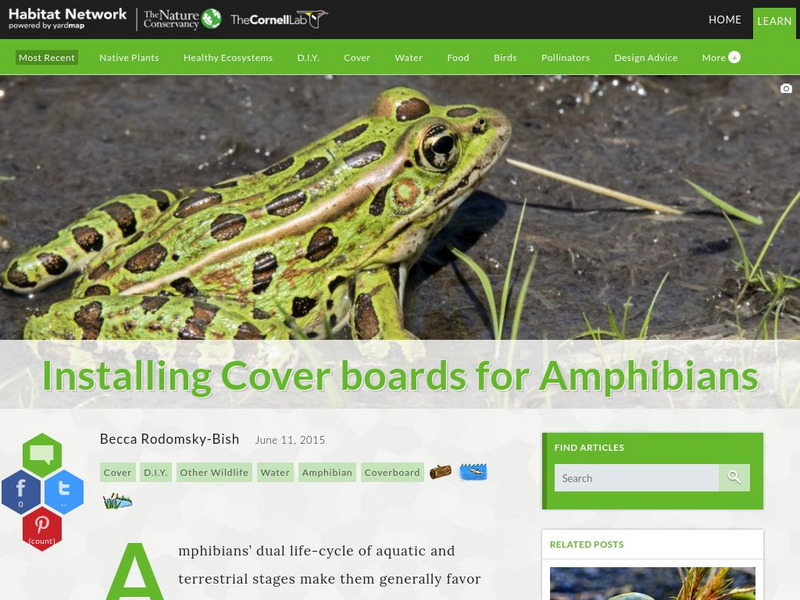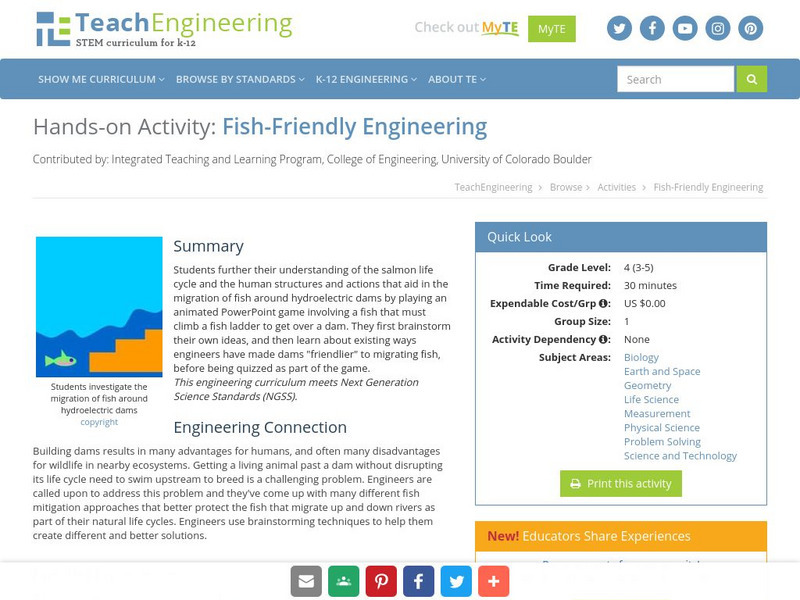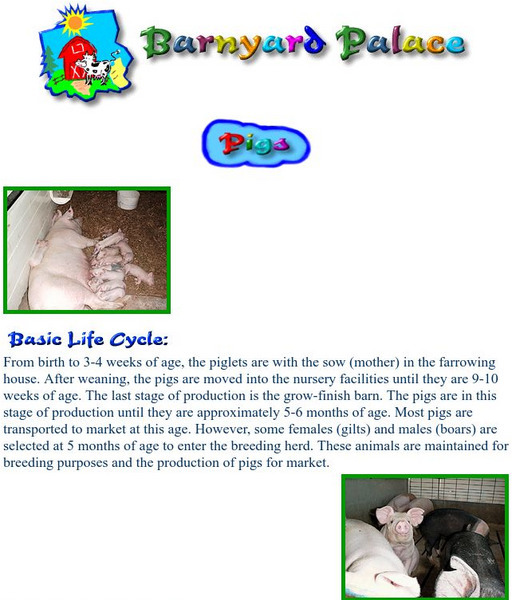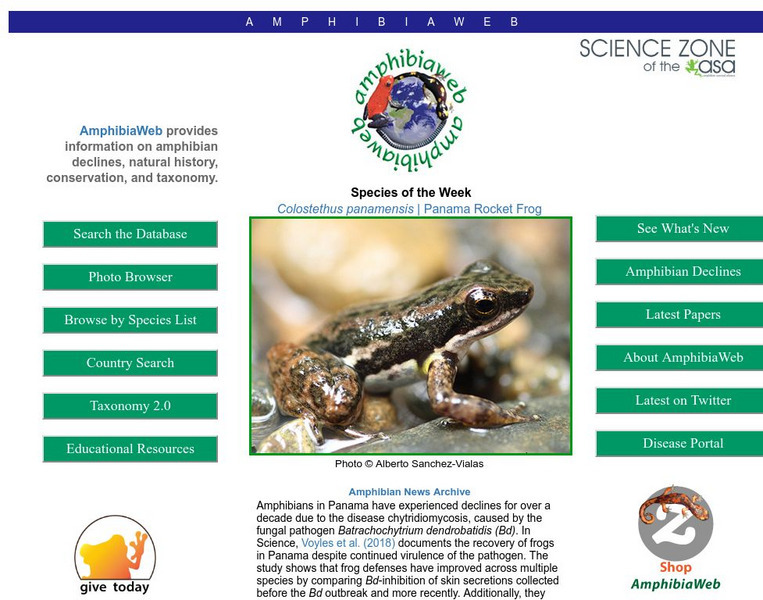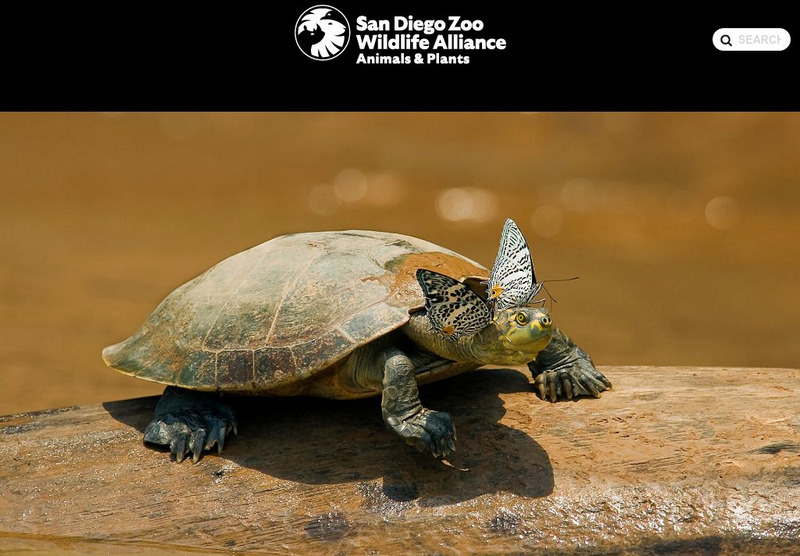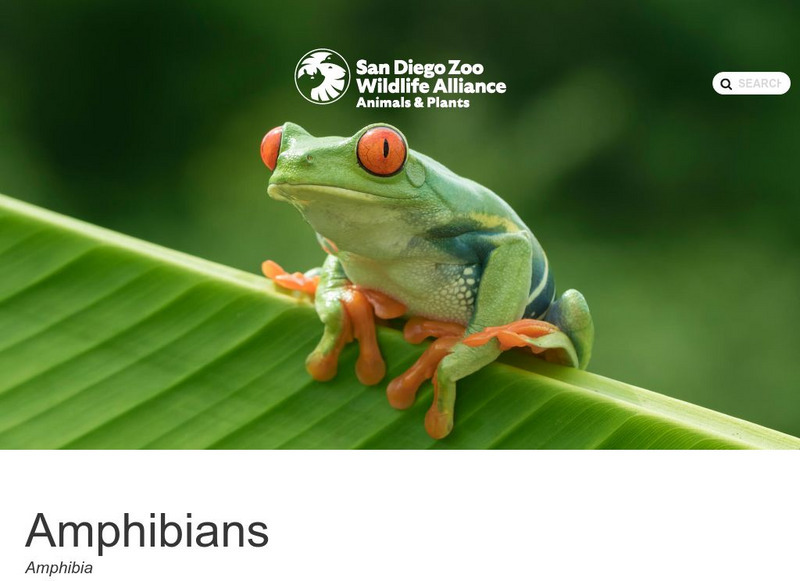Other
Science4 Us: Animals
In online and offline activities, students broaden their understanding of animals by learning to identify and classify animals into six categories: mammals, birds, fish, amphibians, reptiles, and invertebrates.
PBS
Pbs Nova: Guess the Embryo
Every animal starts out as a single, fertilized cell. What happens then? Launch an interactive that showcases four similar-looking embryos. Can you guess what each one of them actually is? Watch them develop.
Wisc-Online
Wisc Online: Lifecycles of Animals and Plants
This segment covers the lifecycles of various plants and animals. Illustrations begin with the production of a gamete and describe the processes that occur throughout the lifespan of living creatures.
Cornell Lab of Ornithology
Habitat Network: Installing Cover Boards for Amphibians
Find out how to make a cover board for Amphibians' dual life-cycle of aquatic and terrestrial stages.
Other
Marietta College: Mollusk Reproduction
Marietta College offers a detailed article on the reproduction cycle of freshwater mollusks.
PBS
Pbs Nature: Elephants
Did you know that the elephant is the largest animal in the world? Discover more about where they live, what they eat and how they socialize when you visit this site.
Morning Earth
How Life Works: Biosphere Is Process: Animal & Plant Gas Exchange
Scholars explore the biology concept of the oxygen cycle. The tutorial consists of definitions and pictures about animal and plant gas exchange.
PBS
Pbs Learning Media: Cloud Age Two
In this video segment from Nature, Cloud, a two-year-old horse, interacts with his family in the wild. [3:23]
Sumanas
Sumanas Inc: Life: The Science of Biology: The Ovarian and Uterine Cycles
What exactly happens when you ovulate? This tutorial explains what happens including what hormones are released and when.
CK-12 Foundation
Ck 12: Third Grade Science
This customizable digital textbook covers topics related to third-grade science. It is Next Generation Science Standards (NGSS) aligned.
TeachEngineering
Teach Engineering: Dams
Through eight lessons, students are introduced to many facets of dams, including their basic components, the common types (all designed to resist strong forces), their primary benefits (electricity generation, water supply, flood...
TeachEngineering
Teach Engineering: Fish Friendly Engineering
Students further their understanding of the salmon life cycle and the human structures and actions that aid in the migration of fish around hydroelectric dams by playing an animated PowerPoint game involving a fish that must climb a fish...
Other
Barnyard Palace: Pigs
This is a site for the basic information on pigs. It gives you the life cycle, why they are raised, facts about their diets, the different species. Along with all that there are a few more interesting facts.
Canadian Museum of Nature
Canadian Museum of Nature: Sea Otter
Get to know the Sea Otter.. colored photos, description, life cycle, map of habitat, food. Only the basic details of this animal are given, making this site perfect for younger researchers.
University of California
Regents of the University of California: Amphibia Web
AmphibiaWeb, a site inspired by global amphibian declines, is an online system that allows free access to information on amphibian biology and conservation. This site is filled with amphibian facts, a glossary of terms, species numbers,...
San Diego Zoo Global
San Diego Zoo: Reptiles
What is a reptile? Use this resource to understand the basic facts of all reptiles and click to detailed information on many specific types.
San Diego Zoo Global
San Diego Zoo: Turtle and Tortoise
This resource provides detailed information about turtles and tortoises, as well as several pictures and an audio clip.
Saint Louis Zoo
Saint Louis Zoo: Monarch Butterfly
Learn animal facts about the appearance, behavior, life cycle, and diet of the monarch butterfly.
Other
K 3 Learning Pages: Reptiles and Amphibians
Come and discover more about reptiles and amphibians when you explore this awesome resource. This site is filled with useful links.
PBS
Nh Pbs: Nature Works: California Tiger Salamander
This site created by NatureWorks focuses on the California Tiger Salamander. The content of this resource includes a look at this species' characteristics, range, habitat, food, reproduction, and behavior.
US Geological Survey
Usgs Kids: Mealworm Ranch
A fun, hands-on project that will allow your students see first-hand how metamorphosis works. Students observe mealworms develop and change right before their eyes.
University of Wisconsin
University of Wisconsin: Amphibian Embryology Tutorial
This amphibian embryology tutorial takes an in depth look at the question "Why study amphibians?". Through this tutorial students will develop a better understanding of vertebrate development.
San Diego Zoo Global
San Diego Zoo: Amphibians
This resource offers extensive information about amphibians. Visitors can click on the listed amphibians for further information.
PBS
Nh Pbs: Nature Works: Blue Spotted Salamander
This site created by NatureWorks focuses on the Blue-Spotted Salamander. The content of this resource includes a look at this species' characteristics, range, habitat, food, and more.
Other popular searches
- Plant Animal Life Cycles
- Sea Animal Life Cycle
- Powerpoint Animal Life Cycle
- Animal Life Cycles Bird
- Animal Life Cycles Units
- Animal Life Cycle Alligator
- Animal Life Cycle Worksheets
- Animal Life Cycle Frog
- Florida Animal Life Cycles
- Reef Animal Life Cycles
- Plant, Animal Life Cycles
- Animal Life Cycle Lark



